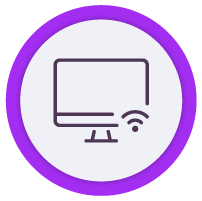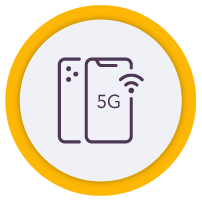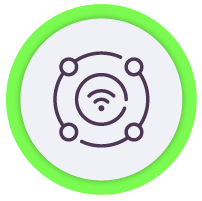Six 2020 Tech Trends in the Shadow of Coronavirus

In the last six months, the Coronavirus pandemic has redefined the world in countless ways. This means that everything, including technology--one of our most effective ways of responding to global challenges--is going to need to change course. The innovations of tomorrow will be defined by the challenges of today. This includes the most big-picture aspects of software all the way to choices around what technology to invest in and which apps to bring to market.
In this article, we’ll look at 6 specific trends apparent in the first half of 2020, how they’ve been impacted by the Coronavirus, and how we might expect them to continue to unfold throughout the rest of the year and beyond.
Trend 1: Artificial Intelligence
Artificial Intelligence, or AI, as SharpMinds.com defines it, is “the usage of algorithms to solve specific tasks by studying large amounts of data to make generalizations and/or some statistical estimations.” It’s been a buzzword a lot longer than “novel Coronavirus,” “COVID-19,” “lockdowns,” or “social distancing,“ and in the time of Corona, AI has grown in importance as changes of consumer spending, social behavior, and business viability have become more and more difficult to predict.

Now that our human brains are overwhelmed, we may need to rely on computer brains to make sense of this unce
rtain time. There’s a chance the rest of 2020 could see AI technology begin to help allay some of the market anxieties which are a byproduct of so much change, or to help us track and trace COVID-19 infections in places without access to the labor-intensive workforce necessary for successful contract tracing. For now, we’ll have to wait and see.
Trend 2: Cloud Computing in the Palm of Our...Laps?
You may have noticed you’re spending a lot more time on your laptop these days, and a lot less time scrolling on your phone. That’s probably because you’re not commuting on the subway, waiting on long lines at stores or, well, really leaving the house all that much. One of the biggest changes in the last half of 2020 may be determined by this shift: as we begin to use stationary technology more, and mobile technology less, what changes, opportunities, products or strategies might spring up in response?

As ZDNet writes: “If the desktop is going to be increasingly cloud-deployed, then it makes a lot more sense for the home worker to be equipped with an inexpensive, solid-state, zero-configuration thin client terminal that uses bandwidth-conserving, encrypted session protocols than an expensive PC asset.” Will Microsoft jump on this first? Or Apple? Or have we missed the mark entirely, and will we all be staring at our 6-inch screens regardless of the laptop, tablet and ROKU remotes lying within arm’s reach?
Trend 3: Bye, 5G (for now)
Before the Coronavirus ransacked the world economy, technologists were predicting that the greatest ‘viral’ spread of 2020 would be 5G. Not anymore. With the UK’s recent about-face on working with Chinese mobile giant Huawei, and the US all-but abandoning its focus on investing in the infrastructure necessary for a true 5G network, it seems 5G will not be...anything more than a topic of discussion in the remainder of 2020--a far cry from the IEEE.org headline just months ago: “Why 2020 Could be the Year of 5G.”

What this means for mobile and wireless technology for the rest of the year remains to be seen. But if, as IEEE wrote, 5G technology “has the potential to revolutionize education and medicine” such as giving “doctors the ability to peer into a patient’s body using ultra-high resolution imaging without having to cut into them,” it could be a challenge for developers and software architects to supplement such innovation using 4G. (We all know we could sure have used some medical innovations in 2020…)
Nonetheless, with 5G not out of the gate, what might replace it? Where could any 5G investment be redirected? What could become our new normal instead?
Trend 4: Internet of Things
In a world defined by social distancing, telemedicine, and a general disinclination for people to do things in confined spaces with other humans unless absolutely necessary, the Internet of Things (IoT) may become the most important way we check out health, keep tabs on our food delivery, and make sense of human interactions during a far-ranging pandemic with no end in sight.
‘IoT For All’ defines the Internet of Things as “a system of interrelated computing devices, mechanical and digital machines, objects, animals or people that are provided with unique identifiers and the ability to transfer data over a network without requiring human-to-human or human-to-computer interaction.” Imagining what could come from a greater investment in a network taking the place of the need for human-to-human contact sounds a lot like a solution we truly need, and yesterday.
Could IoT be the answer to how we slow the spread of the Coronavirus before medical tech invents a vaccine or reliable cure?
Trend 5: Cyber security
One of the most important current trends is Cybersecurity. Nowadays, this new normal has pushed companies to start figuring out new ways to work and to manage their teams. All enterprise processes are managed by data-driven technologies so protecting this information is a key trend in this new normal. Establishing security protocols and secure connections are now a basic thing to do and to have the IT team ready for. In an article in sharpmind.com the author states that “the latest cybersecurity threats are phishing, ransomware, crypto-jacking, cyber-physical attacks, state-sponsored attacks, and IoT attacks. Data breaches are the biggest cybersecurity concern.” Therefore, preparing your IT team, getting the necessary softwares and more, is now crucial to become part of this trend that is getting stronger as we speak. 
With most employees working remotely now, the biggest concern is the breach of data and private information from companies and employees. To avoid this we shared 5 ways of enforcing cyber security inside a company in this article. Try using Zero Trust Technology, VPNs, MFA to grant your team secure access and to keep your information safe in this new digital environment.
Trend 6: The Remote Revolution
As we’ve documented here, one of the greatest changes to workplace culture in technology since the pandemic has also been the greatest change in workplace culture in general: millions of people around the world, including teachers and others across many fields previously thought to “always” depend on live in-person work were forced to go remote.

Technology like Zoom--once a niche product competing with Skype, Google Hangouts, Microsoft Teams, and Webex for the online conference call market--now expects a 200% increase in revenue and a 300% increase of profit in 2020. All because of an increase from 82,000 companies (of over 10 employees) using their product in October 2019 to over 265,000 at the end of January (when the Corona lockdowns began).
The question remains: what technology will bloom from the fertile ground of the Remote Work Revolution? What innovations remain to be made? What products, services, and solutions are waiting for enterprising minds to discover them?
Keep your eyes peeled: the rest of 2020 will certainly begin to answer these questions.
--
If you want to stay up to date with all the new content we publish on our blog, share your email and hit the subscribe button.
Also, feel free to browse through the other sections of the blog where you can find many other amazing articles on: Programming, IT, Outsourcing, and even Management.

Santiago Mino, VP of Strategy at Jobsity, has been working in Business Development for several years now helping companies and institutions achieve their goals. He holds a degree in Industrial Design, with an extensive and diverse background. Now he spearheads the sales department for Jobsity in the Greater Denver Area.